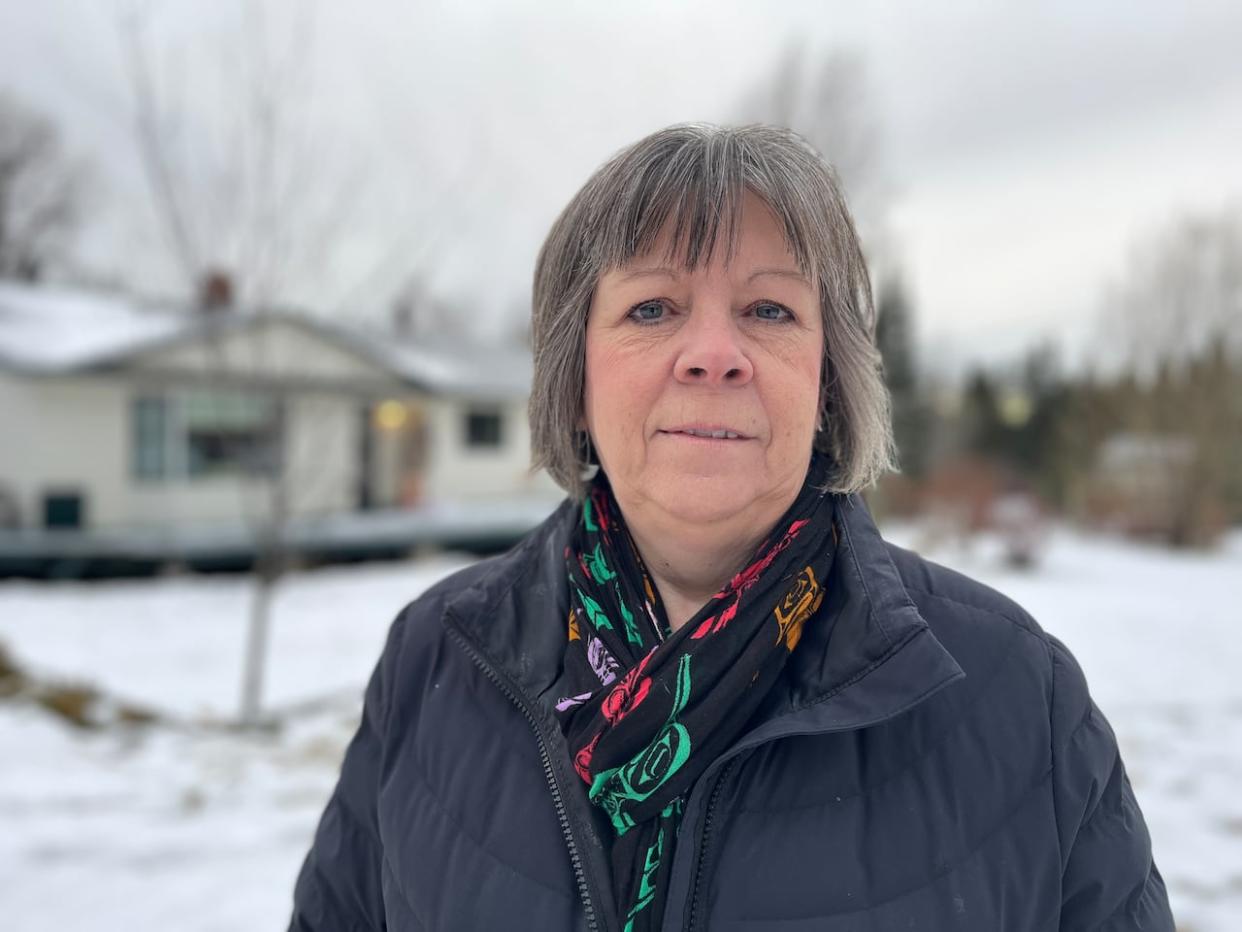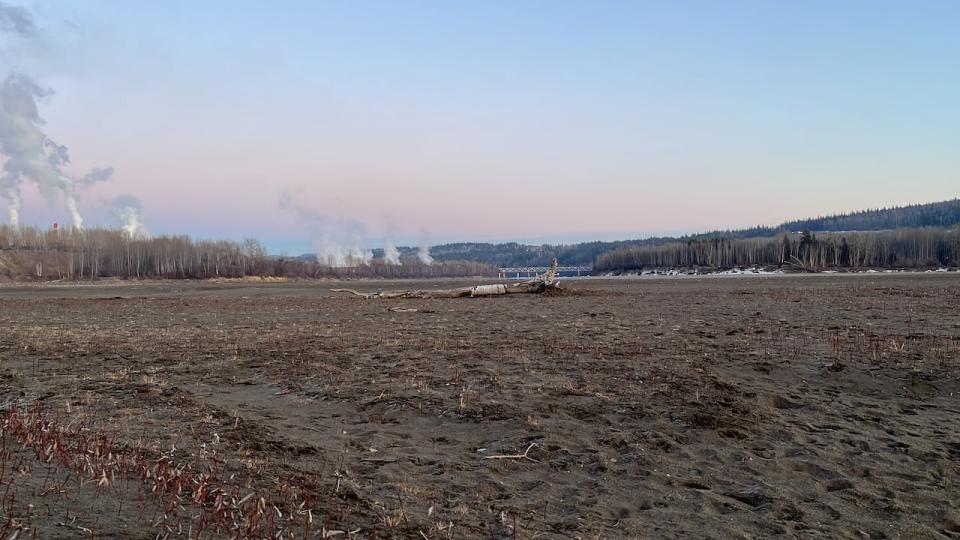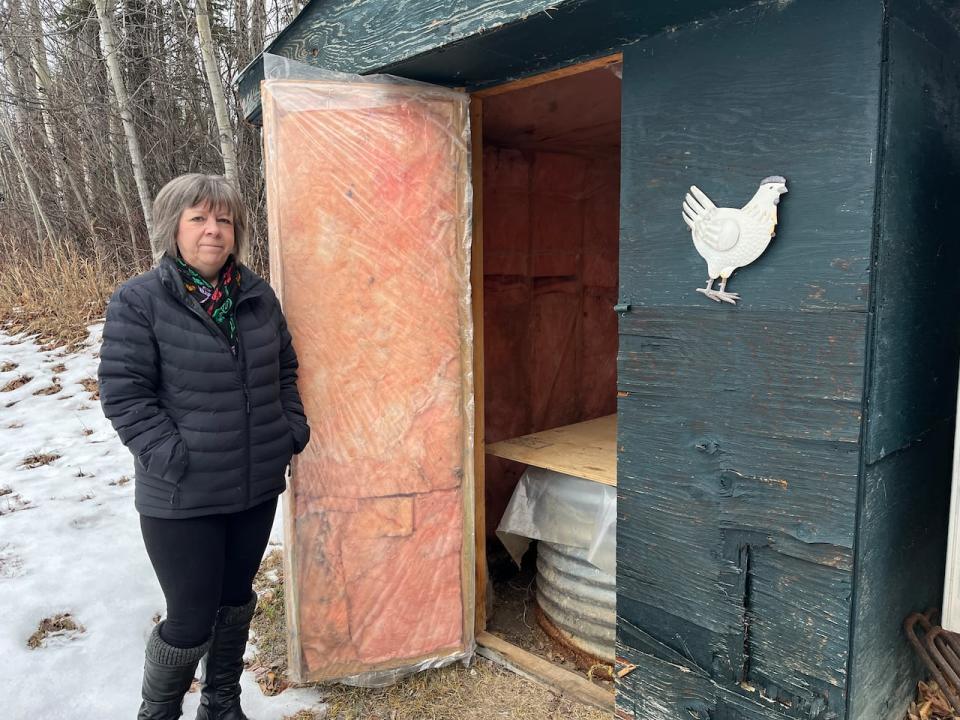A residential drinking well in northern B.C. has run dry, prompting concerns amid unprecedented drought

Joanne Dally, 63, says she doesn't know when she will be able to host her next dinner party — she hasn't had running water at home since mid-October because the well on her property, her only source of water, has run dry.
"We have to go to relatives to shower, we have to haul our water in totes, go to the laundromat," said Dally, who has lived in her home, a few kilometres west of the Fraser River near Prince George, B.C., since 2013.
This year is the first time she's experienced a water shortage, one that has persisted now for six weeks.
"It's exhausting."
Since June, the Upper Fraser River Basin, which includes Prince George, has been experiencing drought levels 4 or 5, the highest on a five-point scale, where ecosystem or socio-economic impacts are likely or almost certain to occur.
For people like Dally who are reliant on well water, this could mean needing to drill deeper wells — and potentially thousands in additional costs.

In Prince George, B.C., where the Nechako and Fraser Rivers meet, the sandy riverbed has been bare for months due to persistent drought conditions. (Andrew Kurjata/CBC News)
Dally, who works part-time at the public library, says her well is currently 15 feet deep, a fraction of some of her neighbours' which have a depth of 500 feet.
"We have no idea how deep they will have to drill [to grab water]," she said, adding she's been quoted up to $35,000 for a new well.
"It's scary. It's not something we ever budgeted for."
Dave Mercer with the B.C. Ground Water Association says Dally's experience could become increasingly common.
"This year is likely a warning sign … it's not just cyclical," he said. "This is what the future is going to hold."
In a written statement, the Ministry of Water, Land and Resource Stewardship told CBC News the province is currently in its second year of prolonged drought, which is having an impact on the groundwater that about a quarter of B.C.'s residents rely on for drinking water.
The Nechako River, which meets the Fraser River at Prince George, is experiencing some of the lowest levels in 70 years, while the Fraser River's low water levels are only slightly less severe.
Dally estimates she's spending an extra eight hours a week hauling water to her home for drinking and cooking, going to the laundromat, and travelling 20 minutes to her daughter's house to shower.
"It's changed our life a lot ... Socially, it's really affected us because no one comes to visit," she told CBC News.
Mercer says there is work happening at the provincial level to address persistent drought, with regional drought teams established by the province tasked with things like encouraging water conservation and providing local drought information to the ministry.
However, "[the province] needs to do a better job of letting of letting average British Columbians know what to expect with respect to water, and how people can pitch in," Mercer said.
"We turn our tap and expect water to come out ... I don't think people give it a second thought but we should."

This shallow well on Dally's property is typically full to about 12 feet. Since June, it's dwindled to a maximum of three feet, barely enough water for a few showers, she says. At times, she says it's been completely dry. (Kate Partridge/CBC News)
In a written response to CBC News, the Regional District of Fraser-Fort George, where Dally lives, says there are currently no programs in place to address issues with residential well water. The district writes that they are not aware of any financial supports through the B.C. government.
CBC News reached out to the province but did not hear back by deadline.
For now, Mercer recommends collecting and using rainwater in barrel, reusing grey water from baths and dish washing for lawn care, and limiting water use in small ways to help conserve water.

 Yahoo News
Yahoo News 
